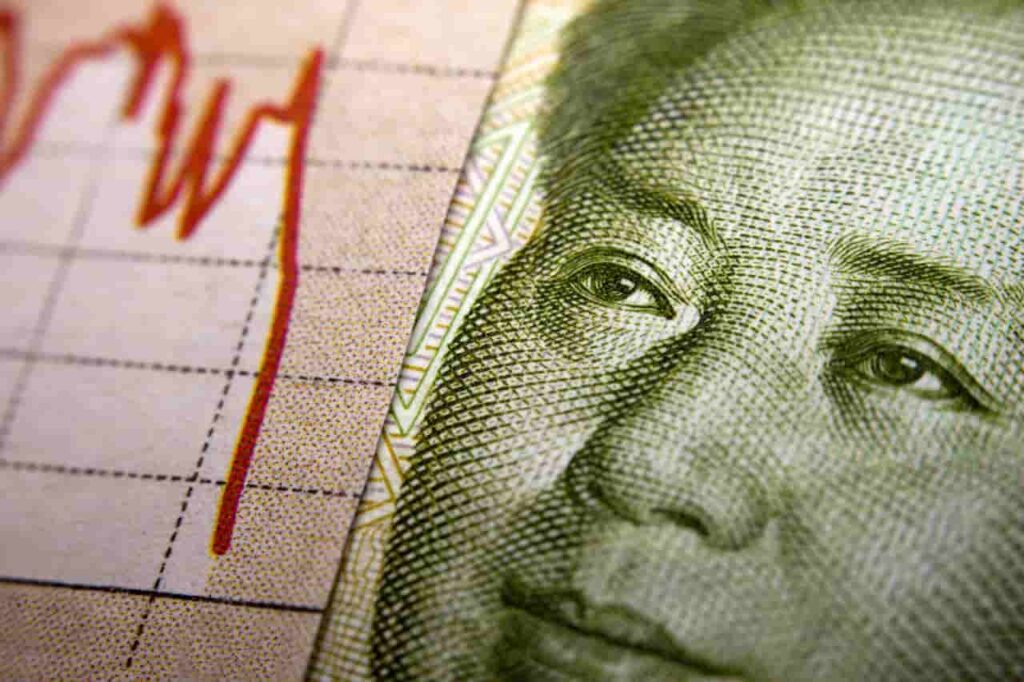There has been much talk about the stupefying rate at which the U.S. government has been borrowing. Given that some estimates place the figure at $1 trillion each quarter – adding onto the already-reached $34 trillion – the anxiety hardly comes as a surprise.
Another country that frequently finds itself in the news over significant debt-taking – commonly in the form of perpetual forecasts of ever-coming but never-arriving collapse – is China.
Indeed, China has been noted for significantly ramping up its burden in recent years, which has, in turn, placed the figures themselves in the spotlight, especially in the context of a slowdown in the country’s incredible annual GDP growth and struggling stock markets.
Earlier in April, Fitch Ratings issued a revised analysis for China, which, while maintaining an ‘A+’ rating, provided a negative outlook, primarily based on the dubious growth prospects in the coming year.
Fitch also forecasts a hefty increase in national debt as compared with GDP which they estimate stood at 56.1% in 2023 but will surge to 61.3% in 2024.
Chinese debt to double by 2030
Given that the nominal GDP of China for 2023 stood at approximately $17.5 trillion, this would place the national debt at $9.83 trillion.
Furthermore, given that a common estimate for the country’s growth in 2024 is set at about 5%, the rating agency’s projected ratio would place the burden at $11.277 trillion – a 14.72% increase from 2023.
Such debt growth would significantly outpace the U.S., whose burden is forecast to grow by approximately 11.76%, based on Bank of America’s estimate of $1 trillion per quarter.
In a similar vein, the annual figures would place China’s borrowing rate at $361.75 billion per trimester, which would, in turn, mean the debt will have grown to just under $20 trillion by 2030, provided the pace remains flat – a highly unlikely scenario.
Nonetheless, such a figure would further highlight the accelerating pace of debt growth in China compared to the U.S., whose own burden would – at its current pace – rise to $57 trillion by 2030 – the former would double while the latter would increase 67.6%.
The difficulties in assessing China’s economy
It is, however, worth noting that the debt figure calculated from Fitch Ratings’ ratio is substantially lower than the $14 trillion figure frequently cited for 2023.
Furthermore, there are substantial challenges when discussing the state of China’s economy given that the numbers tend to be impacted, among other things, by floating exchange rates which can significantly skew results, as explained in a late 2023 Financial Times report.
The challenges have again become apparent with the now-popular statistic that states that the total debt ratio of the Chinese nation – not just the nation-state – grew to a staggering 287.8% last year.
While this is a new and worrying record by some accounts, it is worth pointing out that a 2020 report by the South China Morning Post placed the ratio at 335%.
Similarly, the very same metric shows that the U.S. total debt-to-GDP ratio stood at 730% in October 2023.
While this is a shockingly high figure, it is also worth pointing out that it actually constitutes a substantial decrease from previous years as it, for example, stood at 830% in 2021.
Disclaimer: The content on this site should not be considered investment advice. Investing is speculative. When investing, your capital is at risk.









